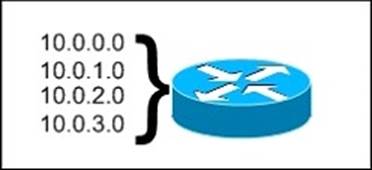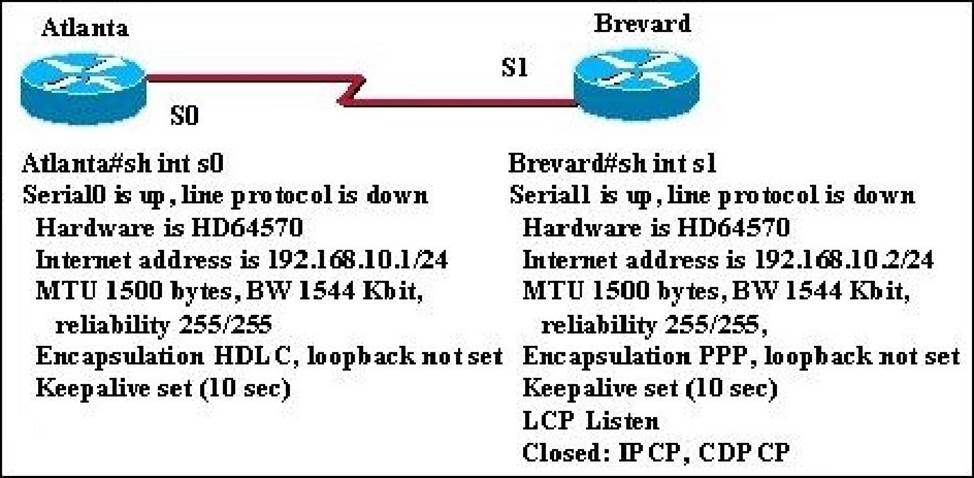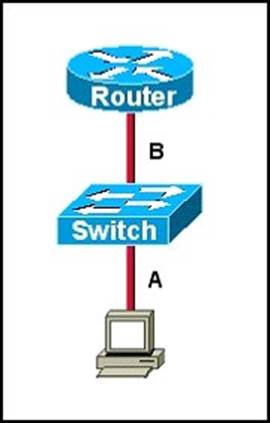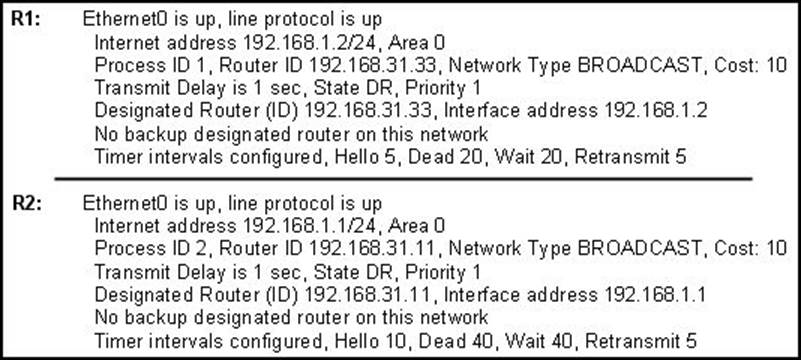Cisco 200-125 CCNA Cisco Certified Network Associate CCNA (v3.0) Online Training
Cisco 200-125 Online Training
The questions for 200-125 were last updated at Dec 14,2025.
- Exam Code: 200-125
- Exam Name: CCNA Cisco Certified Network Associate CCNA (v3.0)
- Certification Provider: Cisco
- Latest update: Dec 14,2025
If a router has four interfaces and each interface is connected to four switches, how many broadcast domains are present on the router?
- A . 1
- B . 2
- C . 4
- D . 8
Which command enables IPv6 forwarding on a cisco router?
- A . ipv6 host
- B . ipv6 unicast-routing
- C . ipv6 local
- D . ipv6 neighbor
Refer to the exhibit.

What is the most appropriate summarization for these routes?
- A . 10.0.0.0 /21
- B . 10.0.0.0 /22
- C . 10.0.0.0 /23
- D . 10.0.0.0 /24
Which set of commands is recommended to prevent the use of a hub in the access layer?
- A . switch(config-if)#switchport mode trunk
switch(config-if)#switchport port-security maximum 1 - B . switch(config-if)#switchport mode trunk
switch(config-if)#switchport port-security mac-address 1 - C . switch(config-if)#switchport mode access
switch(config-if)#switchport port-security maximum 1 - D . switch(config-if)#switchport mode access
switch(config-if)#switchport port-security mac-address 1
A router has learned three possible routes that could be used to reach a destination network. One route is from EIGRP and has a composite metric of 20514560. Another route is from OSPF with a metric of 782. The last is from RIPv2 and has a metric of 4.
Which route or routes will the router install in the routing table?
- A . the OSPF route
- B . the EIGRP route
- C . the RIPv2 route
- D . all three routes
- E . the OSPF and RIPv2 routes
Two routers named Atlanta and Brevard are connected via their serial interfaces as illustrated, but they are unable to communicate. The Atlanta router is known to have the correct configuration.

Given the partial configurations, identify the fault on the Brevard router that is causing the lack of connectivity.
- A . incompatible IP address
- B . insufficient bandwidth
- C . incorrect subnet mask
- D . incompatible encapsulation
- E . link reliability too low
- F . IPCP closed
A network administrator needs to configure a serial link between the main office and a remote location. The router at the remote office is a non-cisco router.
How should the network administrator configure the serial interface of the main office router to make the connection?
- A . Main (config)#interface serial 0/0
Main (config-if)#ip address 172.16.1.1 255.255.255.252
Main (config-if)#no shut - B . Main (config)#interface serial 0/0
Main (config-if)#ip address 172.16.1.1 255.255.255.252
Main (config-if)#encapsulation ietf
Main (config-if)#no shut - C . Main (config)#interface serial 0/0
Main (config-if)#ip address 172.16.1.1 255.255.255.252
Main (config-if)#encapsulation frame-relay
Main (config-if)#authenication chap
Main (config-if)#no shut - D . Main (config)#interface serial 0/0
Main (config-if)#ip address 172.16.1.1 255.255.255.252
Main (config-if)#encapsulation ppp
Main (config-if)#no shut
Which layer 2 protocol encapsulation type supports synchronous and asynchronous circuis and has built-in security mechanisms?
- A . Frame Relay
- B . HDLC
- C . x.25
- D . PPP
Refer to the exhibit.

The two connected ports on the switch are not turning orange or green.
What would be the most effective steps to troubleshoot this physical layer problem? (Choose three.)
- A . Ensure that the Ethernet encapsulations match on the interconnected router and switch ports.
- B . Ensure that cables A and B are straight-through cables.
- C . Ensure cable A is plugged into a trunk port.
- D . Ensure the switch has power.
- E . Reboot all of the devices.
- F . Reseat all cables.
A network administrator is troubleshooting the OSPF configuration of routers R1 and R2. The routers cannot establish an adjacency relationship on their common Ethernet link. The graphic shows the output of the show ip ospf interface e0 command for routers R1 and R2.
Based on the information in the graphic, what is the cause of this problem?

- A . The OSPF area is not configured properly.
- B . The priority on R1 should be set higher.
- C . The cost on R1 should be set higher.
- D . The hello and dead timers are not configured properly.
- E . A backup designated router needs to be added to the network.
- F . The OSPF process ID numbers must match.
Latest 200-125 Dumps Valid Version with 759 Q&As
Latest And Valid Q&A | Instant Download | Once Fail, Full Refund

